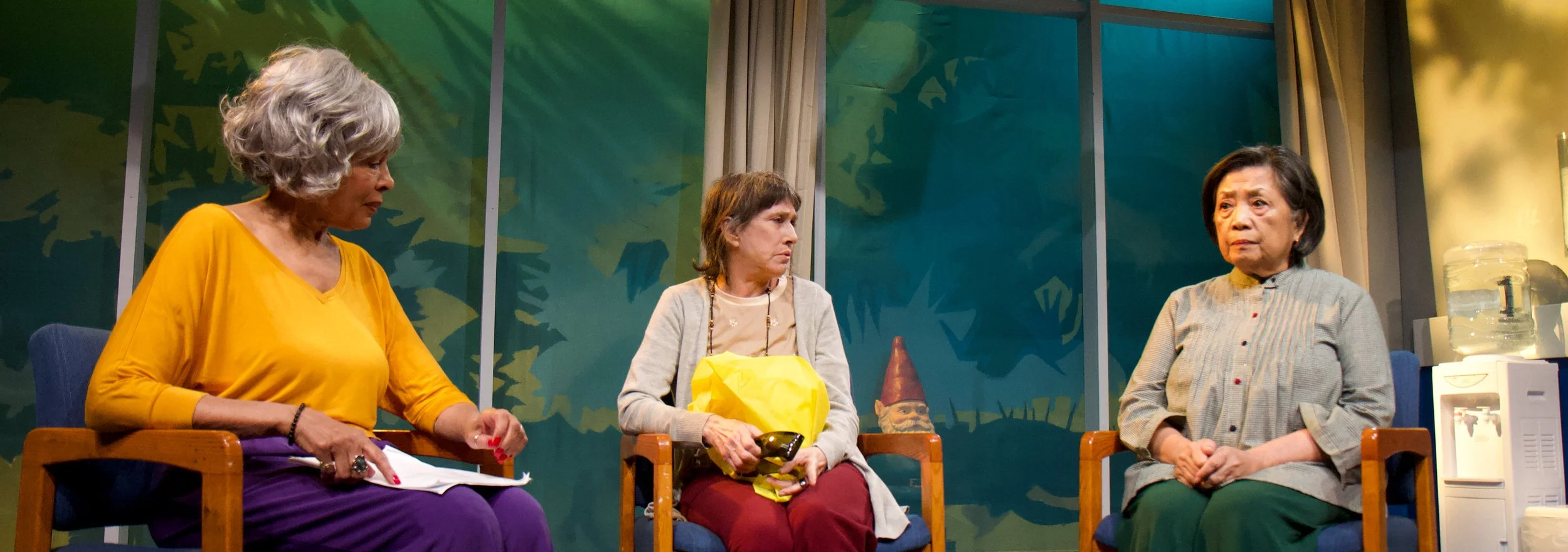I probably should have had a better idea of what I was getting into by the title: Under the Blue Sky is not exactly original, and neither is the play. An exploration of unspoken love and obsession in the workplace, it aims to be specific in its focus on British schoolteachers. Instead, it strikes some very well-known chords: unrequited-feelings-between-best-friends (in G), unhealthy-obsession (D minor), and-love-that-overcomes-great-obstacles (C major, of course). It is relatively well-executed, but generally underwhelming. The play is split into three acts. Each is a scene between two teachers in which the nature of the relationship is revealed. In Act 1, we meet best friends Helen and Nick. They are making dinner, chatting, flirting, and all is going well until Nick, almost all at once, tells Helen he’s moving away, he knows Helen is desperately in love with him, and he doesn’t know how he feels about Helen. Helen is mortified, and then turns a knife on Nick, begging him to stay. In the end they decide they’ll go on holiday together in a few months.
Act 2 finds us in a bedroom late at night, with Graham and Michelle. Their relationship (and the scene) is a kind of grotesque amplification of Helen and Nick’s: Graham is obsessed with Michelle, and Michelle, aware of the fact, is planning to sleep with Graham to make her ex-boyfriend jealous. She is terribly cruel to Graham, who in response to this cruelty reveals that he has been stalking Michelle for years, taking photos of her with other men, entering her room at night, the whole kit n’ caboodle. Act 3 is a scene between Anne and Robert, good friends with 20 years between them. This relationship, despite its oddities, proves to be the healthiest and most plausible of the three: things end well for Anne and Robert, at least.
Performances are generally strong. Standouts include Sarah Manton, who plays Helen, jittery and staccato in her excitement and attempts to remain composed as Nick devastates and embarrasses her. Jonathan Tindle (Graham) also elicits empathy as he takes insult after insult from Michelle, quietly kindling with pain and anger as she carelessly hurls cruelties his way. Elizabeth Jasicki’s drunken ramblings as Michelle are far too drawn out; one gets the point (she is terribly selfish and mean, particularly to Graham) about 10 minutes into the scene, and it continues for another twenty. This also may be a fault of the script, which could use some editing, here in particular. Christine Rendel and Richard Hollis are interesting and entertaining as Anne and Robert, and convincing as good friends, but little chemistry exists between the two as lovers. After they confess their love to each other and kiss passionately, the two separate and spend the rest of the scene several feet away from one another, as though the revelation never occurred.
The space, the Kraine Theater, is one of those downtown beasts with lights that go on and off at will, and technical malfunctions are an expectation more than an exception. There’s a charm in this, but it cannot be ignored: the space refuses to let you forget you are in a theater, so you can’t fully lose yourself in what is supposed to be a kitchen or a back deck. Kristen Costa’s design attempts to acknowledge this in some ways, and ignores it in others. Sets for all three scenes are onstage for the entire play, and action is confined to 1/3 of the space each time, a very theatrical choice. But each set is pretty detailed, with multiple props and dressings: characters actually cook in the kitchen, which smells great, but ultimately backfires. It places too much attention on the set in a space that can’t support realism. Furthermore, it is unnecessary in this play that is about the relationships between characters, not the spaces they inhabit. In short, it distracts.
I should note that Under the Blue Sky includes some well-turned phrases and interesting back and forth, particularly in the first and third scenes. In each scene, the nature of the relationship between the two characters is revealed slowly, bit by bit, which provides some satisfaction in watching. David Eldridge has written a solid play. I just wish it managed to tap into something beyond the relationships themselves, revealed something about teaching, or even illustrated British culture. Mind the Gap’s mission statement is to bring British theater (and I would think British culture) to American audiences, after all. But change a few phrases, and the play could have been about American nurses or Canadian businesspeople. This play has nothing to tell us that we don’t already know. It entertains, but does not inform. See it on a first date, if you prefer theater to the movies, but otherwise, you’ll be OK without.






